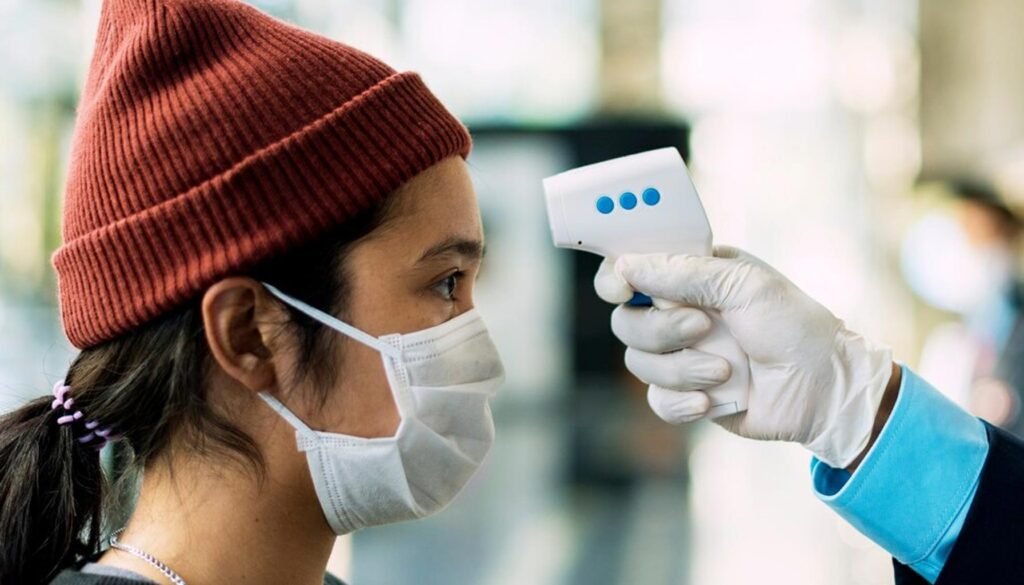
Index:
- Understanding JN.1: A New Menace
- The Spread and Impact of JN.1
- Symptoms and Severity: What We Know So Far
- Vaccines and Treatments: Staying Protected
- A Global Perspective and the Road Ahead
- Key Takeaways
Understanding JN.1: A New Menace
The COVID-19 pandemic continues to evolve with the emergence of new variants, and the latest to grab attention is JN.1. Originating as a descendant of the Omicron variant, JN.1 first appeared in the U.S. in September and is closely related to the BA.2.86 strain. While the initial strain of Omicron is no longer in circulation, its offspring like JN.1 continue to keep the virus relevant and evolving.
The Spread and Impact of JN.1
As of January 2024, JN.1 has become a dominant force in the COVID-19 landscape. Initially accounting for a mere 3.5% of cases in mid-November, it surged to over 60% in January. This rapid evolution and spread of JN.1 correspond with an overall increase in COVID-19 cases globally. The Centers for Disease Control and Prevention (CDC) have documented JN.1 as the most widely circulating COVID-19 variant both in the United States and worldwide.
As of January 21, the Indian SARS-CoV-2 Genomics Consortium (INSACOG) has reported a cumulative total of 1,513 instances of the JN.1 COVID-19 sub-variant across India. Notably, Maharashtra leads with the most cases, followed by Karnataka. Other states, including Andhra Pradesh, Kerala, and Gujarat, have also reported cases of this variant. The distribution of cases in various states is as follows:

| State | Number of JN.1 Cases |
|---|---|
| Maharashtra | 382 |
| Karnataka | 249 |
| Andhra Pradesh | 189 |
| Kerala | 156 |
| Gujarat | 126 |
| West Bengal | 96 |
| Goa | 90 |
| Tamil Nadu | 89 |
| Rajasthan | 38 |
| Telangana | 32 |
| Chhattisgarh | 25 |
| Delhi | 21 |
| Uttar Pradesh | 9 |
| Haryana | 5 |
| Odisha | 3 |
| Uttarakhand | 1 |
| Manipur | 1 |
| Nagaland | 1 |
Furthermore, the central government has emphasized the importance of vigilance in the wake of the recent surge in COVID-19 cases and the emergence of the JN.1 sub-variant. States and Union territories are being encouraged to adhere strictly to the revised surveillance strategy for COVID-19 issued by the Union Ministry of Health and Family Welfare. This includes regular monitoring and reporting of influenza-like illness (ILI) and severe acute respiratory illness (SARI) cases across all health facilities.
The World Health Organisation has categorized the JN.1 variant as a “variant of interest” due to its rapid spread but considers it to pose a “low” global public health risk. Previously, JN.1 was classified under the BA.2.86 sub-lineages, which are considered variants of interest.
Symptoms and Severity: What We Know So Far
JN.1 presents symptoms similar to previous Omicron variants, without an apparent increase in severity. Common symptoms of COVID-19, including those caused by JN.1, remain consistent across different variants. However, there’s some indication that JN.1 may be linked to an increase in cases of diarrhea, although firm data to support this is still pending.
Vaccines and Treatments: Staying Protected
The fight against COVID-19, including the JN.1 variant, continues with the use of updated vaccines, testing, and antiviral treatments. The latest COVID-19 vaccines are expected to provide increased protection against JN.1, with the ability to detect the variant and maintain effectiveness in antiviral treatments. It’s crucial to stay updated with vaccinations and continue using protective measures like masking in crowded places, hand-washing, and monitoring local COVID transmission levels.
A Global Perspective and the Road Ahead
The prevalence of JN.1 as a major variant in the current COVID-19 scenario highlights the persistent nature of the virus and the need for continued vigilance. With rising cases and the variant’s ability to quickly become the dominant strain, it’s more important than ever to utilize all available tools to combat the spread and minimize the impact of this ongoing pandemic.
Key Takeaways
- JN.1 is a descendant of the Omicron variant and has become a dominant strain in COVID-19 cases.
- It presents similar symptoms to previous Omicron variants without increased severity.
- Updated COVID-19 vaccines and treatments are crucial in combating this variant.
- Global vigilance and protective measures continue to be important in managing the spread of JN.1.
Sources
- Yale Medicine: 3 Things to Know About JN.1, the New Coronavirus Strain
- Johns Hopkins Bloomberg School of Public Health: JN.1, the Dominant Variant in the COVID Surge
- Yahoo News: COVID variant JN.1 is the most prevalent strain of the virus globally


